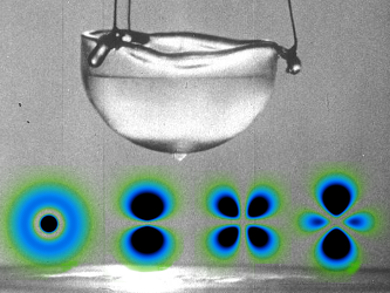Electrons in liquid helium close to absolute zero behave very strangely. When an electron is injected into the helium, it repels the surrounding atoms and forms a “bubble” with a uniform diameter of about 3.6 nm. The bubbles then sink and can be detected when they reach the bottom of the container.
Since the bubbles have the same size and experience the same drag, they are expected to sink with the same speed. However, even before the bubble reaches the detector, unidentified smaller objects show up in the measurements, a phenomenon that has remained largely unexplained since the 1960s.
Humphrey J. Maris and colleagues, Brown University, Providence, RI, USA, have performed new measurements that lead to an even stranger explanation. They detected at least 18 negatively charged objects of different sizes (“exotic ions”) that move faster than anticipated for an electron. According to their reasoning, the only feasible explanation is the fission of the electron’s wavefunction into discrete fractions that travel in individual bubbles. The researchers explain the “shattering” of the wavefunction by reflection at the barrier, part of the electron’s wavefunction enters the helium, part of it is reflected. Previous attempts to explain the exotic ions included impurities or negative helium ions, which would not show such a large range of sizes.
This result raises a number of philosophical questions about the interpretation of quantum mechanics. A wavefunction usually collapses upon observation of a physical effect – any bubble not actually containing the electron would disappear. The study thus has interesting implications on the definition of measurements.
- Study of Exotic Ions in Superfluid Helium and the Possible Fission of the Electron Wave Function,
W. Wei, Z. Xie, L. N. Cooper, G. M. Seidel, H. J. Maris,
J. Low. Temp. Phys. 2014.
DOI: 10.1007/s10909-014-1224-3


